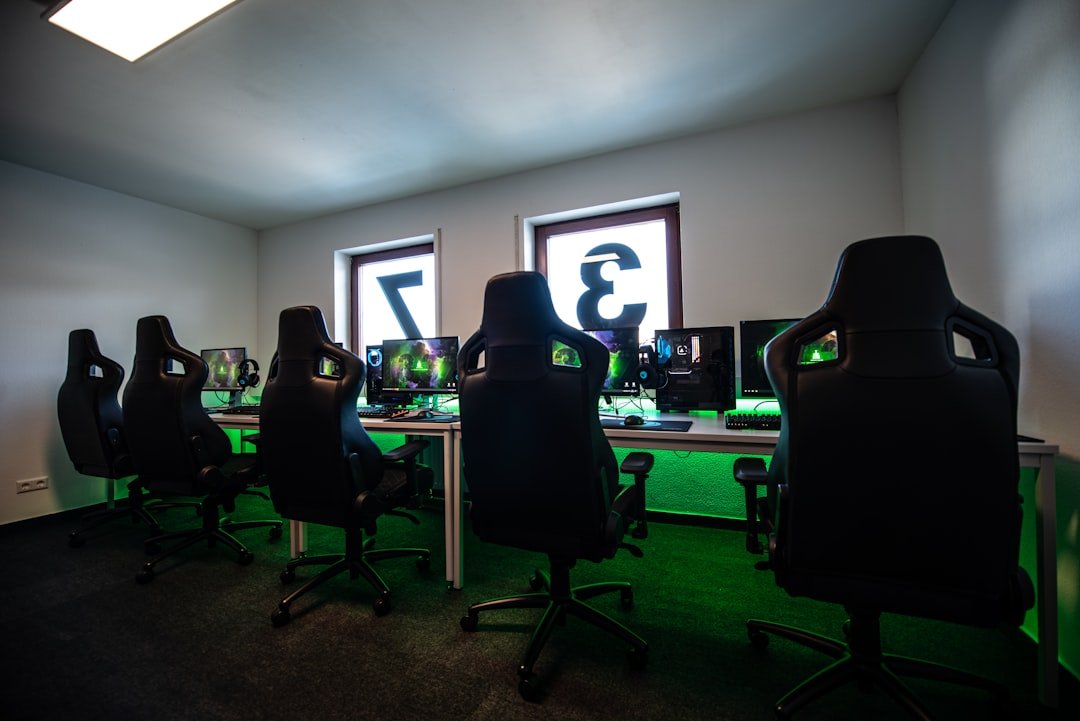Now Reading: Playing Classic PC Games on Modern Systems: A Step-by-Step Guide
-
01
Playing Classic PC Games on Modern Systems: A Step-by-Step Guide
Playing Classic PC Games on Modern Systems: A Step-by-Step Guide

As I sit down at my computer, nostalgia washes over me like a warm blanket. The world of classic PC games is a treasure trove of memories, filled with pixelated adventures and captivating stories that shaped my childhood. From the early days of DOS-based games to the iconic titles of the late ’90s and early 2000s, these games hold a special place in my heart.
They represent a time when gaming was about exploration, creativity, and the thrill of discovery. The charm of these classics lies not only in their gameplay but also in the simplicity and innovation that defined an era. Revisiting these classic titles has become more than just a pastime; it’s a journey back to my roots as a gamer.
The graphics may seem dated by today’s standards, but the gameplay mechanics and storytelling often surpass many modern games. Whether it’s the strategic depth of “Civilization” or the whimsical charm of “Monkey Island,” each game offers a unique experience that transports me back to simpler times. In this article, I will explore how to relive those cherished moments by navigating the world of classic PC games, from understanding compatibility issues to connecting with fellow enthusiasts.
Key Takeaways
- Classic PC games hold a special place in gaming history and continue to be enjoyed by many enthusiasts.
- Compatibility issues can arise when trying to run classic PC games on modern systems, but emulators can help bridge the gap.
- Researching system requirements is crucial to ensure that the emulator and classic PC game will run smoothly on your system.
- Installing emulators is a necessary step to play classic PC games on modern hardware.
- Configuring emulators for optimal performance can enhance the gaming experience and minimize technical issues.
Understanding Compatibility Issues
One of the first hurdles I encounter when diving into classic PC games is compatibility. As technology advances, older games often struggle to run on modern operating systems. I’ve experienced the frustration of trying to launch a beloved title only to be met with error messages or crashes.
This is primarily due to the differences in hardware and software architecture between the old and new systems. Understanding these compatibility issues is crucial for anyone looking to enjoy classic games on contemporary machines. To tackle these challenges, I’ve learned that there are several approaches I can take.
One option is to run the game in compatibility mode, which simulates an older version of Windows. This feature can sometimes breathe new life into stubborn titles. However, not all games respond well to this method, and I’ve found that some may require additional tweaks or even third-party software to function correctly.
Emulators and virtual machines have become my go-to solutions for running classic games, allowing me to create an environment that mimics the original hardware.
Researching System Requirements
Before embarking on my journey to play classic PC games, I’ve discovered that researching system requirements is essential. Each game has its own set of specifications that dictate what hardware and software are needed for optimal performance. I often find myself scouring forums and fan sites for this information, as it can be scattered across various sources.
Knowing whether my current setup meets these requirements saves me time and frustration down the line.
This means that while I may have a powerful machine capable of running the latest AAA titles, I still need to ensure that it can handle the quirks of older software. Sometimes, I’ve had to adjust settings or even downgrade certain components to create a more compatible environment for these nostalgic gems.
Installing Emulators
Once I’ve navigated the compatibility landscape and researched system requirements, the next step is installing emulators. Emulators are software programs that replicate the hardware of older systems, allowing me to run classic games on my modern PThere are various emulators available, each tailored for different types of games and systems. For instance, DOSBox is a popular choice for running DOS-based games, while ScummVM is perfect for point-and-click adventures.
The installation process can vary depending on the emulator I choose, but I’ve found that most come with user-friendly guides that make setup straightforward. After downloading the emulator, I typically follow a series of prompts to install it on my system. Once installed, I can begin configuring it to suit my gaming preferences.
This step is crucial because it ensures that the emulator runs smoothly and provides an optimal gaming experience.
Configuring Emulators for Optimal Performance
Configuring emulators is where the real magic happens. After installation, I dive into the settings to fine-tune performance based on my hardware capabilities and personal preferences. This process can be both exciting and daunting; there are numerous options to explore, from adjusting CPU cycles to tweaking sound settings.
I often find myself experimenting with different configurations until I achieve a balance between performance and visual fidelity. One aspect I pay close attention to is graphics settings. Many emulators offer options to enhance visuals beyond what was originally possible on older hardware.
For instance, I can enable filters that smooth out pixelation or increase resolution for a sharper image. However, I’ve learned that pushing these settings too far can lead to instability or crashes, so moderation is key. Through trial and error, I’ve developed a configuration that allows me to enjoy classic games while maintaining a sense of authenticity.
Obtaining Classic PC Games
With my emulator set up and configured, the next step is obtaining classic PC games. This part of the process can be both thrilling and challenging. While some titles are readily available through digital distribution platforms like GOG or Steam, others may require a bit more effort to track down.
I often find myself exploring abandonware sites or online marketplaces where vintage games are sold or traded. I’ve also discovered that many classic games have dedicated fan communities that preserve and share them online. These communities often provide patches or mods that enhance gameplay or fix bugs present in the original releases.
However, I always approach this aspect with caution, ensuring that I’m obtaining games legally and ethically. The thrill of finding a long-lost title or discovering a hidden gem adds an extra layer of excitement to my gaming experience.
Troubleshooting Common Issues
Despite my best efforts, I’ve encountered my fair share of troubleshooting challenges while playing classic PC games. From graphical glitches to sound issues, these problems can sometimes disrupt my gaming experience. However, I’ve learned that most issues have solutions readily available through online forums or community resources.
When faced with a problem, my first step is usually to search for similar experiences shared by other gamers. Often, someone else has encountered the same issue and posted a solution online. If that doesn’t yield results, I turn to troubleshooting guides specific to the emulator or game in question.
Patience is key during this process; sometimes it takes multiple attempts or adjustments before everything runs smoothly again.
Setting Up Controllers and Input Devices
As I delve deeper into classic PC gaming, I’ve realized that setting up controllers and input devices can significantly enhance my experience. While many classic titles were designed for keyboard and mouse controls, some games lend themselves well to gamepads or other input devices. Configuring these peripherals can be a bit tricky at times, but it’s worth it for the added comfort and nostalgia.
I often start by connecting my controller and checking if it’s recognized by the emulator. Most modern emulators support various input devices, allowing me to map buttons according to my preferences. This customization not only makes gameplay more enjoyable but also helps me replicate the feel of playing on original hardware.
Whether it’s using a retro-style controller or a modern gamepad, having the right input device can make all the difference in immersing myself in classic adventures.
Customizing Graphics and Display Settings
As I immerse myself in classic PC games, customizing graphics and display settings becomes an essential part of enhancing my experience. While nostalgia often draws me back to pixelated graphics, there’s something satisfying about tweaking settings for improved visuals without losing the essence of the original game. Many emulators offer a range of options that allow me to adjust resolution, aspect ratio, and even apply filters for smoother graphics.
For instance, some titles benefit from higher resolutions that bring out intricate details in their artwork, while others shine with retro filters that evoke memories of CRT monitors from yesteryear. Striking this balance between nostalgia and modern enhancements allows me to appreciate these classics in new ways while still honoring their original charm.
Saving and Loading Game States
One of the most convenient features of emulators is the ability to save and load game states at any point during gameplay. This functionality has transformed how I approach classic PC games; no longer am I bound by limited save points or lengthy play sessions. Instead, I can dive into a game for just a few minutes or hours without worrying about losing progress.
I often utilize this feature strategically—saving before challenging sections or experimenting with different choices in narrative-driven games. The ability to rewind time or revisit specific moments adds an extra layer of enjoyment to my gaming experience. It allows me to explore every nook and cranny without fear of permanent consequences, making each playthrough feel more dynamic and engaging.
Connecting with the Classic PC Gaming Community
As I navigate the world of classic PC gaming, I’ve discovered the importance of connecting with fellow enthusiasts who share my passion for these timeless titles. Online forums, social media groups, and dedicated websites provide platforms for discussion, sharing tips, and celebrating our favorite games together. Engaging with this community has enriched my experience in ways I never anticipated.
Through these connections, I’ve gained valuable insights into lesser-known titles and hidden gems that deserve attention alongside iconic classics. Sharing stories about memorable gaming moments fosters camaraderie among us gamers; we bond over our shared experiences and love for retro gaming culture. Whether it’s discussing strategies for overcoming difficult levels or reminiscing about our first encounters with certain games, being part of this community has deepened my appreciation for classic PC gaming as a whole.
In conclusion, revisiting classic PC games has become an enriching journey filled with nostalgia and discovery. By understanding compatibility issues, researching system requirements, installing emulators, configuring settings for optimal performance, obtaining games legally, troubleshooting common problems, setting up controllers, customizing graphics, saving progress conveniently, and connecting with fellow enthusiasts—I’ve created an immersive experience that honors these beloved titles while embracing modern technology. As I continue this adventure through pixelated worlds and captivating stories, I look forward to uncovering even more treasures from gaming’s past.
If you’re interested in learning more about classic PC games and how to run them on modern systems, you may also want to check out this article on the top Twitch streamers in the gaming world. These streamers are dominating the leaderboards and showcasing their skills in a variety of games, old and new. You can read more about their strategies and techniques here.
FAQs
What are classic PC games?
Classic PC games refer to older video games that were designed to be played on personal computers. These games were typically released in the 1980s, 1990s, and early 2000s.
Why do classic PC games need to be run on modern systems?
As technology advances, older hardware and software become obsolete. This can make it difficult to run classic PC games on modern systems, as they may not be compatible with newer operating systems or hardware.
What are the challenges of running classic PC games on modern systems?
Some of the challenges of running classic PC games on modern systems include compatibility issues with newer operating systems, hardware limitations, and outdated graphics and sound drivers.
How can classic PC games be run on modern systems?
There are several methods for running classic PC games on modern systems, including using emulation software, virtual machines, compatibility modes, and source ports. These methods can help to overcome compatibility issues and allow the games to run on newer hardware and operating systems.
What is emulation software?
Emulation software is a type of program that mimics the hardware and software of a different computer system. This allows older games and software to be run on modern systems that may not be compatible with the original hardware.
What are virtual machines?
Virtual machines are software-based emulations of a computer system. They allow users to run multiple operating systems on a single physical machine, which can be useful for running older games that may not be compatible with the host operating system.
What is a compatibility mode?
Compatibility mode is a feature in modern operating systems that allows older software to be run in a way that mimics an older version of the operating system. This can help to overcome compatibility issues when running classic PC games on modern systems.
What are source ports?
Source ports are modified versions of a game’s original source code that have been updated to run on modern systems. These ports are often created by fans and can help to overcome compatibility issues and improve the performance of classic PC games on modern hardware and operating systems.



























